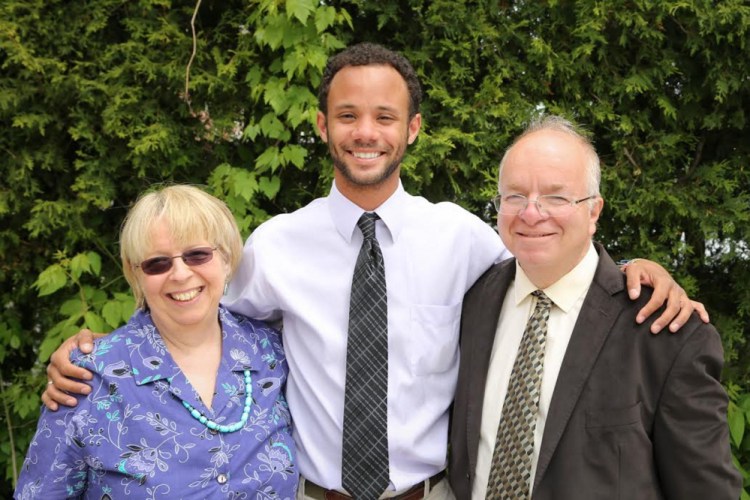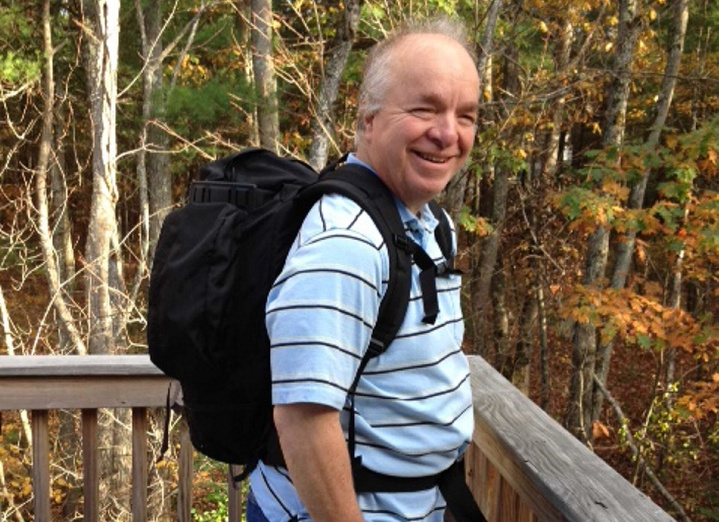After a startling pancreatic cancer diagnosis last summer, longtime University of Southern Maine psychology professor John Broida rushed to complete an online Psych 101 course he was developing.
Two months later – just days after the course began – he died.
But his online course, populated by videos of Broida lecturing and using the quizzes and tests he developed, remains on track with more than 90 students enrolled.
“It was really important to him. He loved teaching,” said his widow, AnneMarie Catanzano.
The students never expected to meet Broida in person. The three-unit course is completely “asynchronous,” meaning there are no “live” sessions where a professor meets online with students through Skype or chat rooms.
With his pending death, Broida knew he needed someone to curate what he called “a course in a box,” someone to send email reminders, check in on students, answer questions and keep track of how students were doing. For that, he turned to friend and fellow USM psychology professor Michael Stevenson.
“I’m more of a docent,” Stevenson said, describing his role in overseeing the course that Broida created. “I’m grateful to him for trusting me to do it.”
Broida was an early adopter of online teaching, taping his lectures and broadcasting them live to remote locations as early as 1988. As technology evolved, so did his courses, colleagues said. He used a grant from The Pew Charitable Trusts to develop an online psychology course at USM, and later was named a Redesign Scholar of the Center for Academic Transformation, creating online and video-based courses.
He was already working on this latest online course when he got his diagnosis in mid-July, Catanzano said.
“He had his first medical appointment on a Thursday or a Friday, he had a CAT scan on Monday, a biopsy on Tuesday, and was admitted to in-home hospice on Saturday,” she said. “This was incredibly fast.”
Catanzano said her husband was collaborating with Stevenson right up to his final days.
“Really, it’s what kept him alive. He didn’t let the cancer get him,” she said. “When he was intellectually involved, he wasn’t as sick, he wasn’t feeling the illness. At his memorial service, I hugged Michael and said, ‘You know, you kept him going.’ ”
Student Bryan Nye said he had several lively email exchanges with Broida in the first week of class, and he was surprised by Broida’s death.
“It was crazy because they made it clear he had some health issues and may not be involved in the class for all the semester,” Nye said. “Then professor Stevenson sent out the email saying he had passed away. When they said he was ill, I didn’t think it was fatally ill.”
Nye, a 40-year-old bench mechanic at Pratt & Whitney, said he’d been emailing Broida two or three days before his death, joking and talking about the class.
Watching Broida on the dozens of 10-12 minute videos since then has been strange, Nye said. Students watch about a dozen videos a week for the class.
“It started out really surreal and actually kind of creepy,” Nye said. “But the more you watch his lectures – he had this eclectic kind of wit and he’s really, really funny – it kind of grew into a sadness that I wouldn’t get to know him better.”
Stevenson, a developmental psychologist, said overseeing the course has been challenging, but satisfying.
“I’m constantly reminded of him,” Stevenson said, whether it’s a simple thing like logging in with Broida’s email address, or having a student ask him what Broida meant in a certain lecture. “I have to figure that out,” he said. Other times it’s a technical challenge. “Sometimes I wish I could take him out to breakfast and ask him, ‘Why did you do it this way?’ …. It’s like John’s just poking me a little bit,” Stevenson said.
Broida, a physiological psychologist who published extensively on the relationships between hormones and behavior, sex differences and the interaction of genes with the environment, did extensive research with mice and rats earlier in his career. But he developed a severe allergy to rats, leading to his embrace of online teaching, Catanzano said.
“We met in 1988, and at that point he was lecturing in Portland and his lectures were being broadcast to Sanford, Saco, Machias. He liked the idea of getting it out to nontraditional students,” she said.
USM and the entire University of Maine System are increasingly using online courses. At USM, about 15 percent of all credit hours are online, not in a physical classroom. Systemwide, online courses now account for about 20 percent of all credit hours.
The students in the class were aware that Broida was entering his final days when they began the course.
“He crafted an introductory message that tried to describe what was happening,” Stevenson said. “After he died, I sent another message.”
Broida did the work, Catanzano said, for the students.
“I don’t think he looked at it like a legacy. He looked at it like, I don’t want them to cancel this class.”
Stevenson agreed.
“Working with students was his life. End of story,” he said. “That was him.”
Send questions/comments to the editors.





Comments are no longer available on this story